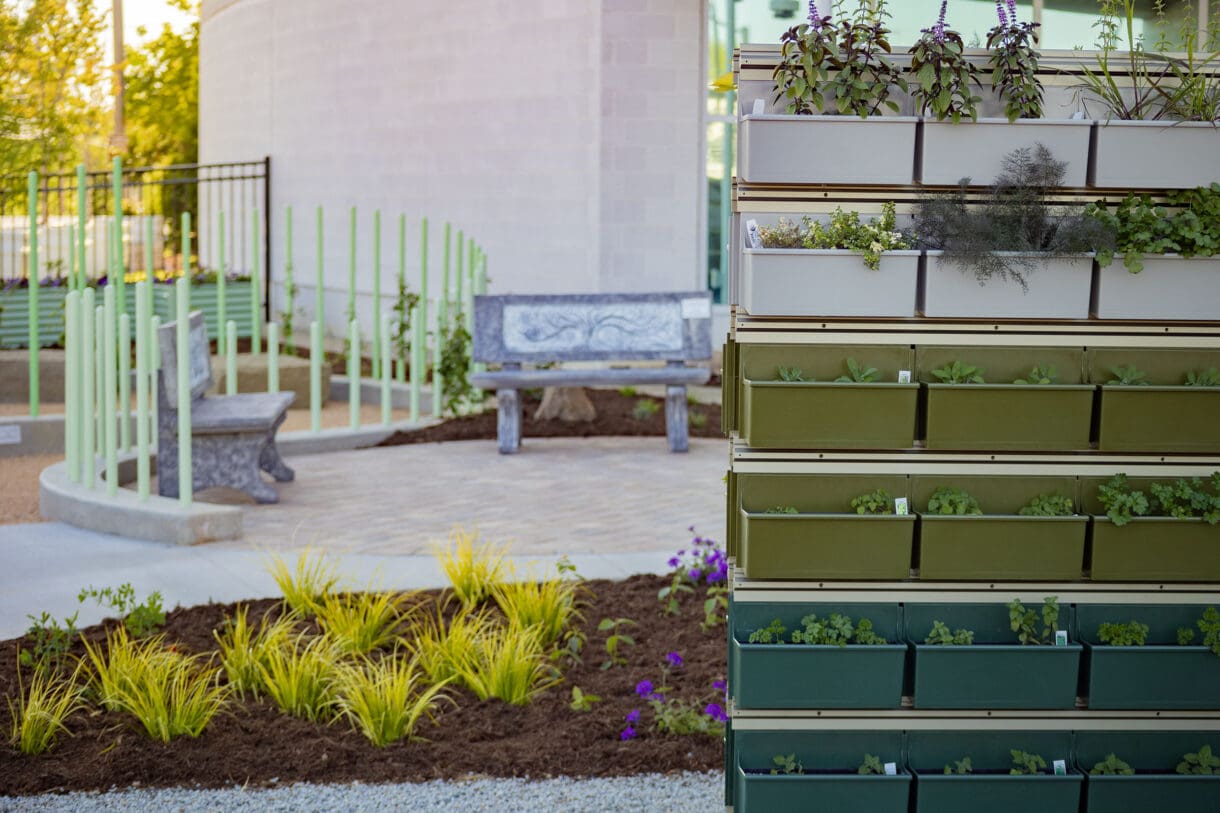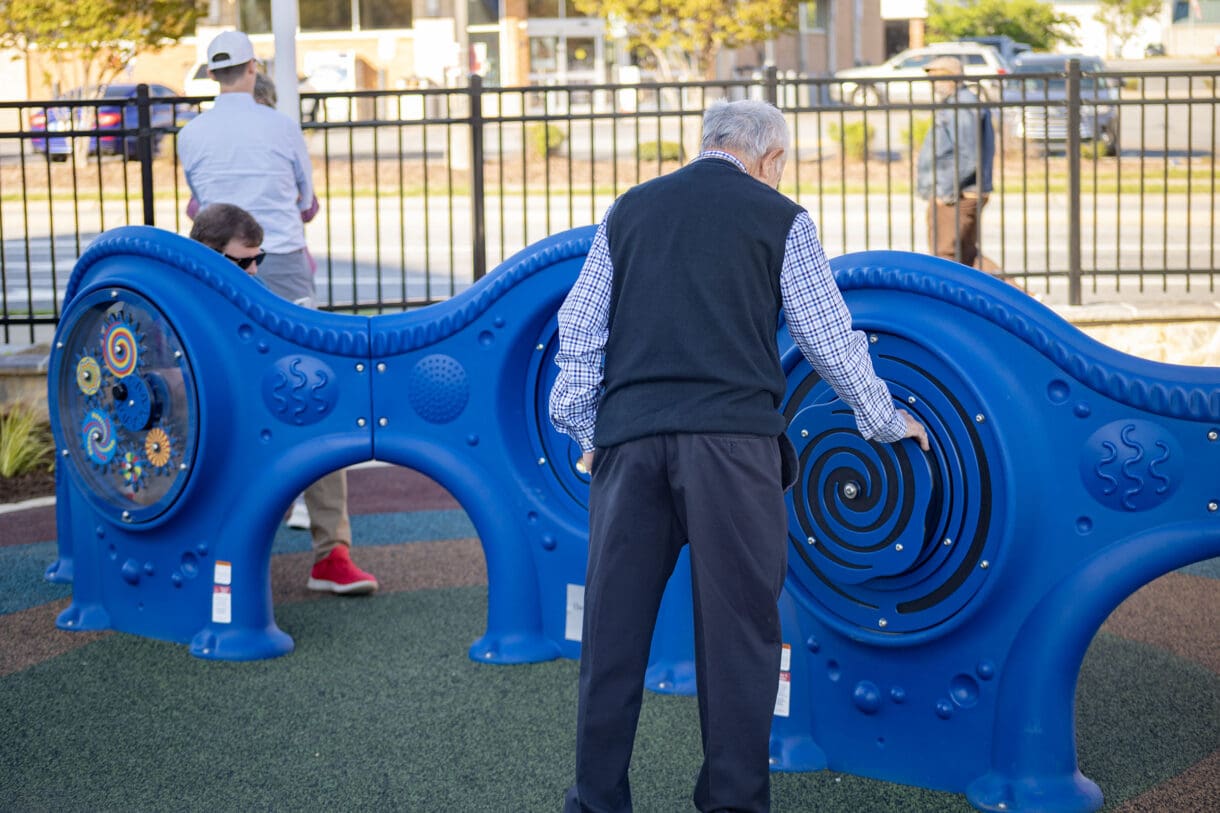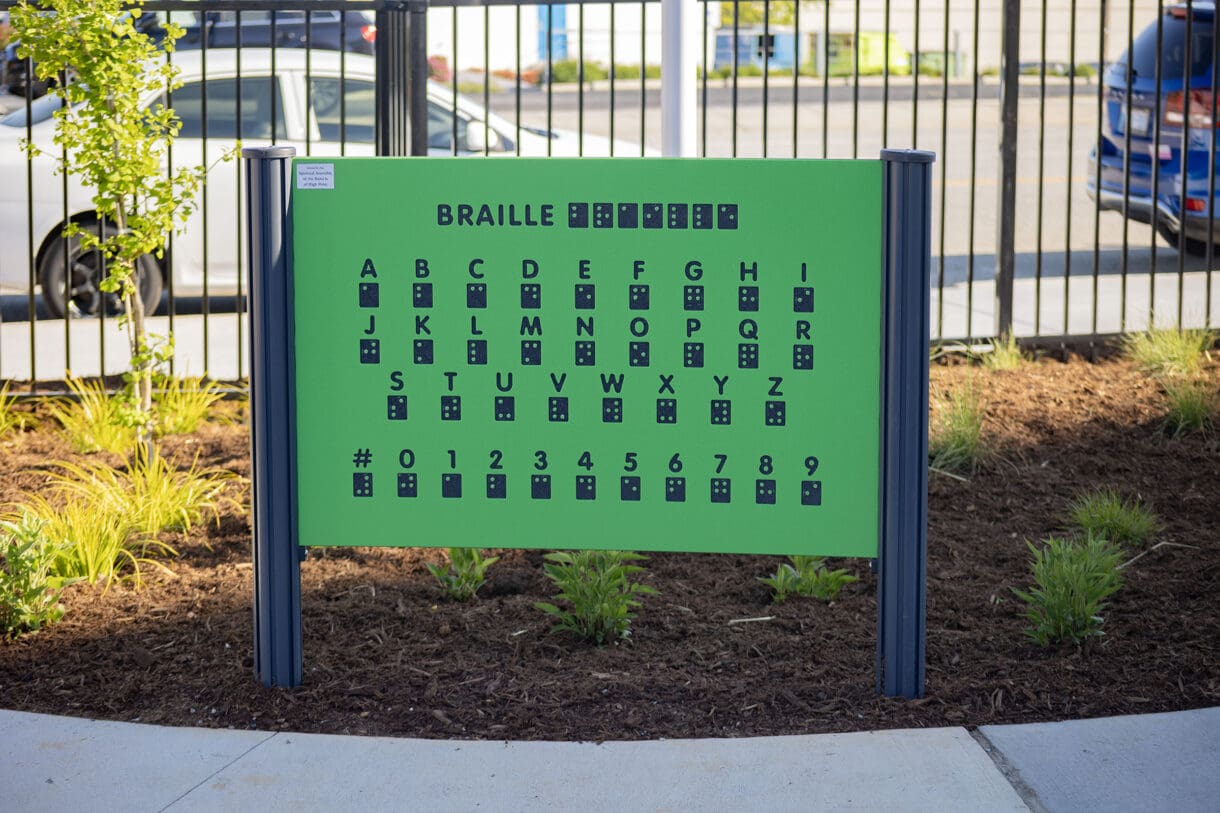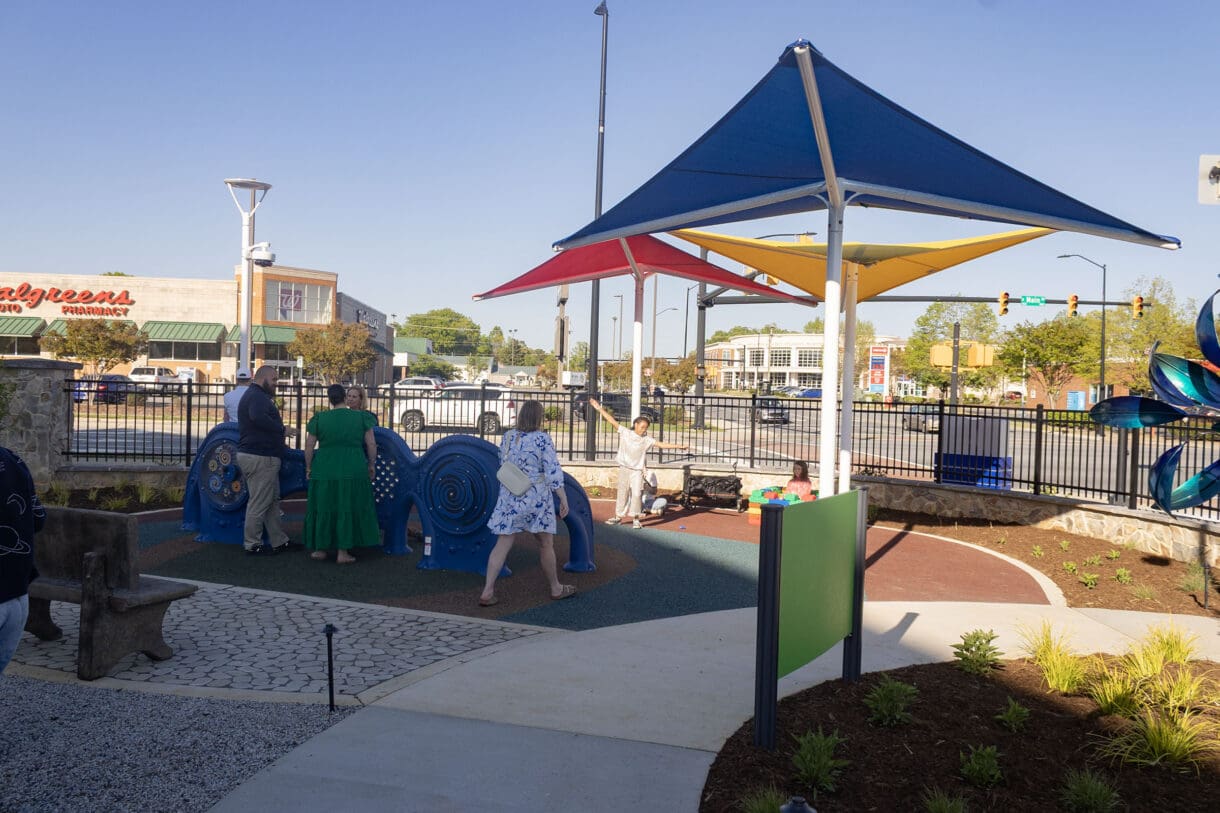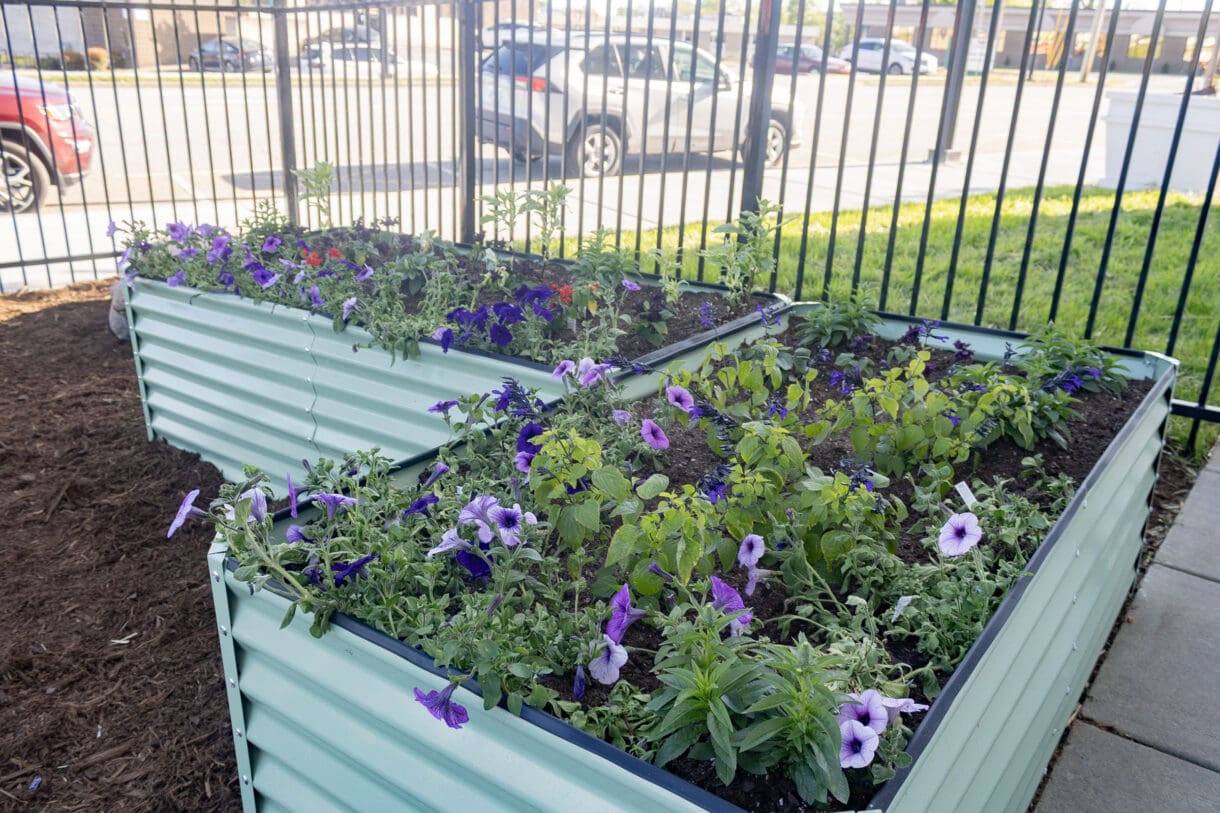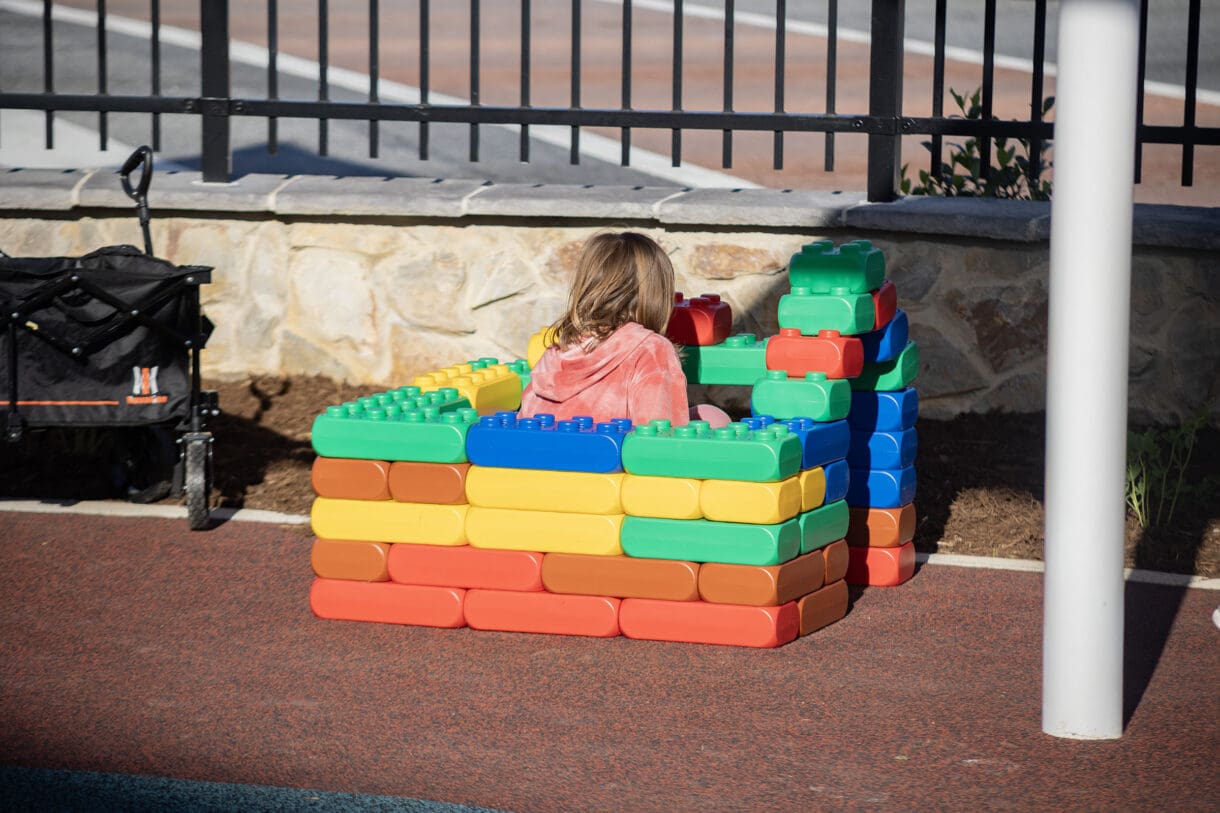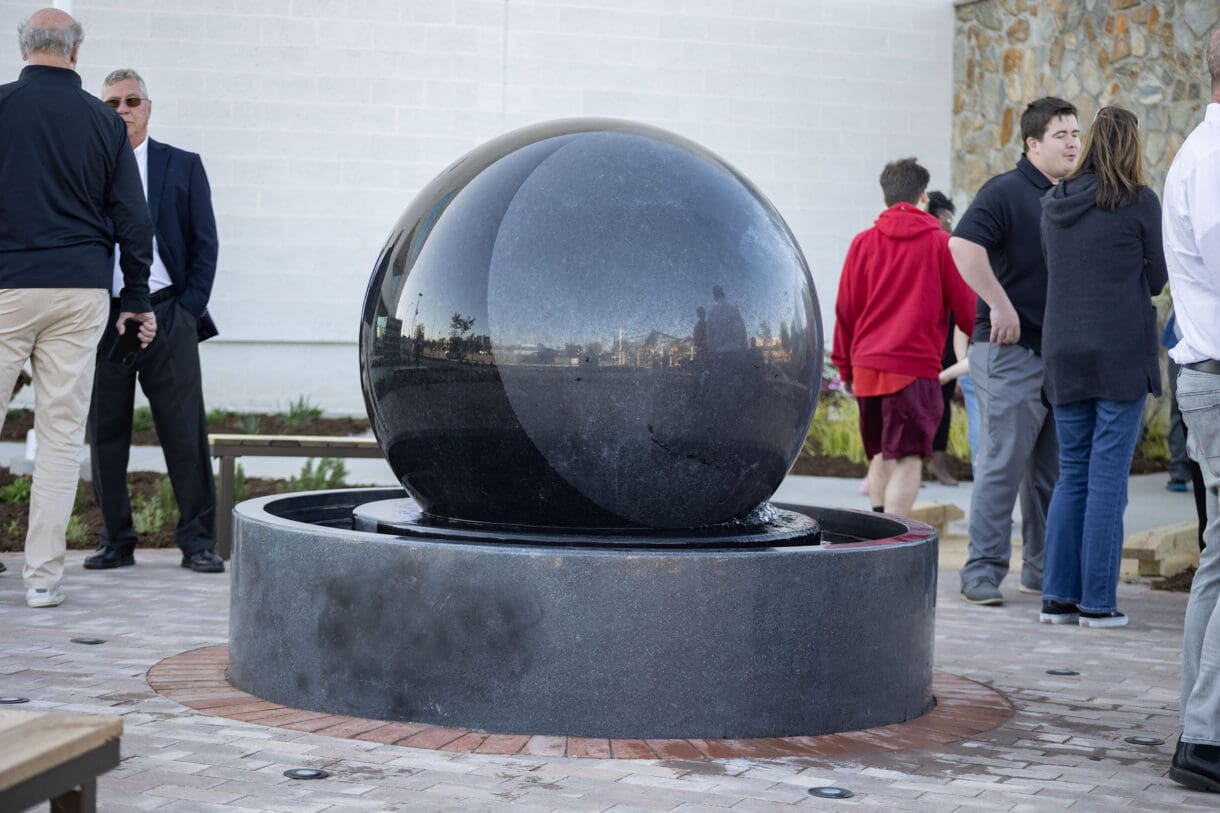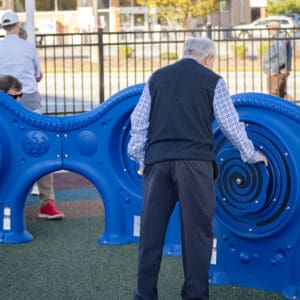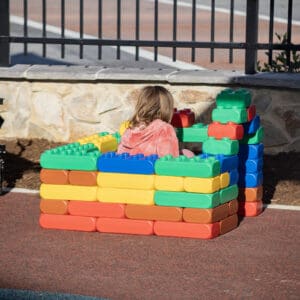The 7,000-square-foot High Point Public Library sensory garden reflects the design principles of sustainability and accessibility at the intersection of education and outdoor recreation.
Enhancing a community’s educational and environmental offerings
In 2022 the City of High Point, in collaboration with the High Point Public Library and High Point Library Foundation, sought to create a public sensory garden for library programs and other organizations. The garden reflects the foundation’s mission to “enhance the life of the community by providing the resources essential for appropriate and proactive response to emerging community education needs and issues.” WithersRavenel had previously prepared master plans for two other City parks, Oak Hollow/Festival Park and Mohawk Park.
Complementing existing spaces
The sensory garden is adjacent to the library building on a very busy corner in downtown High Point. It complements the adjacent to the existing children’s education garden.
WithersRavenel’s landscape architects worked closely with library staff to develop a sensory garden space that will stimulate the five senses. Plants with diverse and changing colors, textures, tastes, and fragrances, combined with two water features and varied surface treatments, create a sense of motion that draws the observer’s eyes, ears, and nose around the garden. The garden features both intimate spaces and areas for small gatherings, as well as a “teaching niche” section that provides educational activities.
A multi-sensory experience
The garden experience is aimed at improving visitors’ physical fitness, mental health, mood, cognition, and development of gross and fine motor skills. In particular, it is focused on making a positive outdoor experience accessible to individuals with special needs, dementia, and other physical and mental disabilities. For example, one patch of the sensory garden is designed for those using wheelchairs to be involved in gardening activities. Along with a play area, there is another “quiet section” specifically for individuals with autism.
The sensory garden and other public spaces around the library are open to the public; however, the sensory garden includes a fence to ensure peace of mind for visitors and those accompanying them. While the sensory garden is considered part of the library, the design allows guests to access the garden directly rather than requiring them to go through the library building.
Greener entryway
A separate but related project included the redesign of the entryway to the library. The entry plaza creates a sense of entry at the main access to the library. What had once been a huge concrete-paved area is now a greener space with a rain garden and other planted areas that create a more welcoming vibe at the library.
WithersRavenel’s landscape architects guided the staff of the library, library foundation, and other stakeholders such as the Autism Society of North Carolina through several alternative concept designs to a desired final design. Construction is expected to begin in February 2024 and be complete in the summer of 2024. The garden, which is expected to cost less than $1 million, has been funded by the City of High Point as well as corporate and individual donors through the library foundation.

